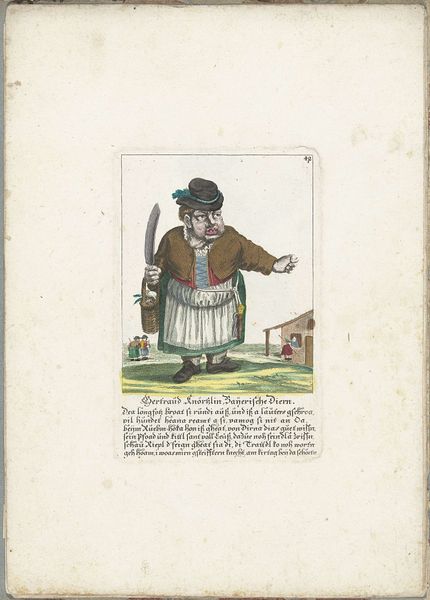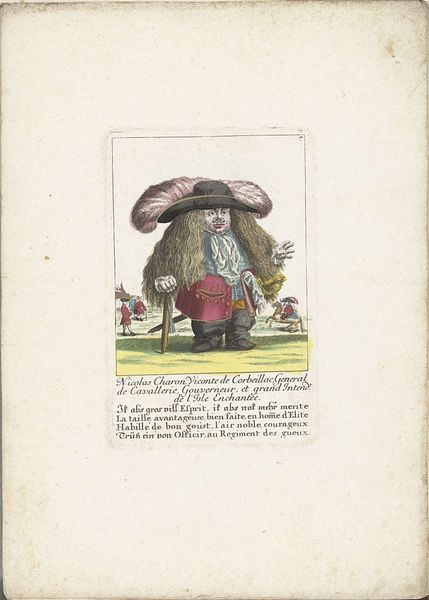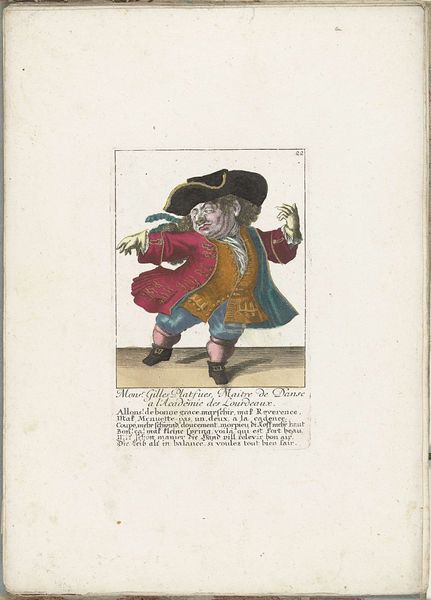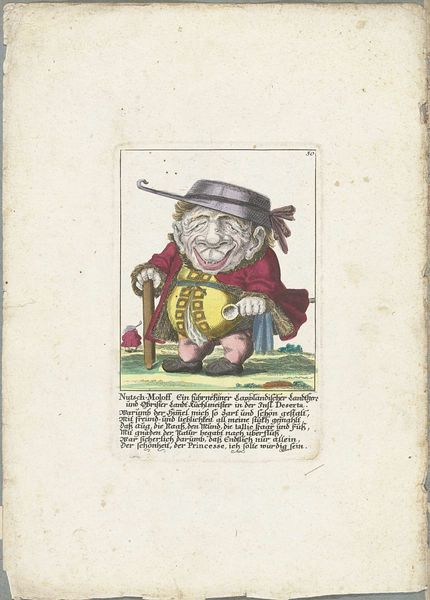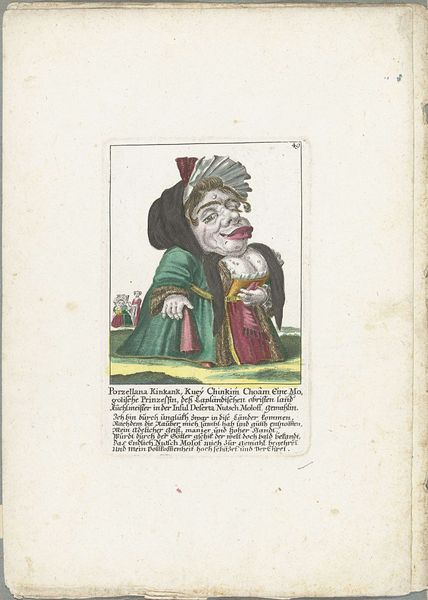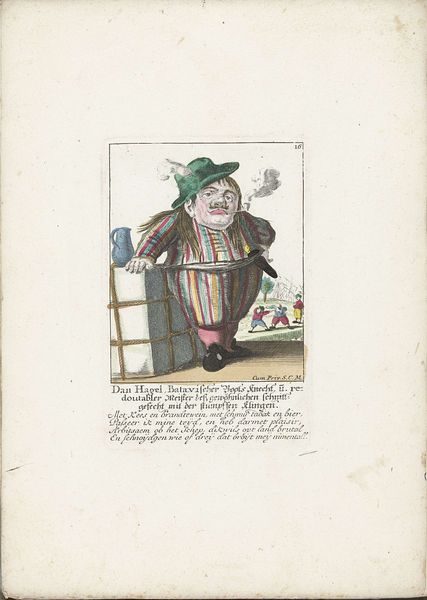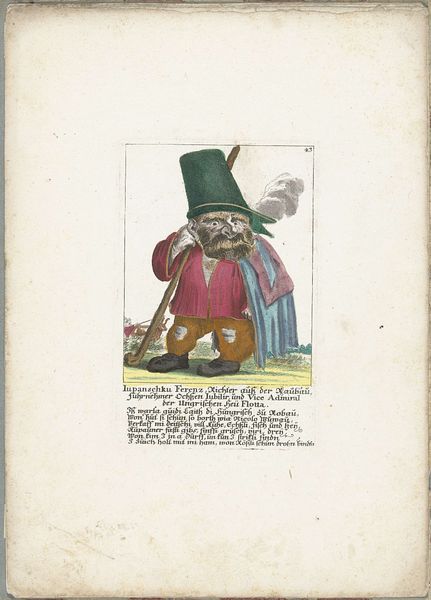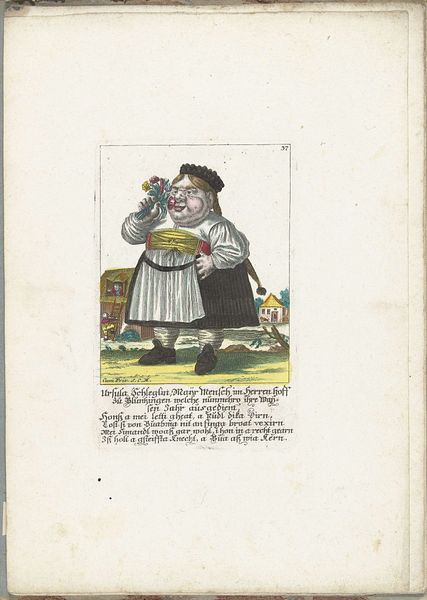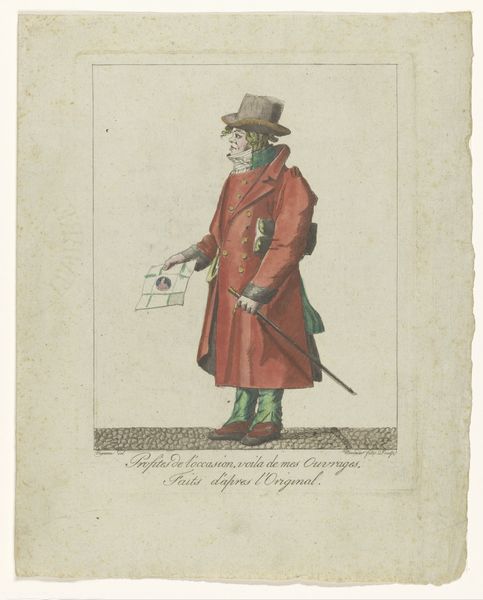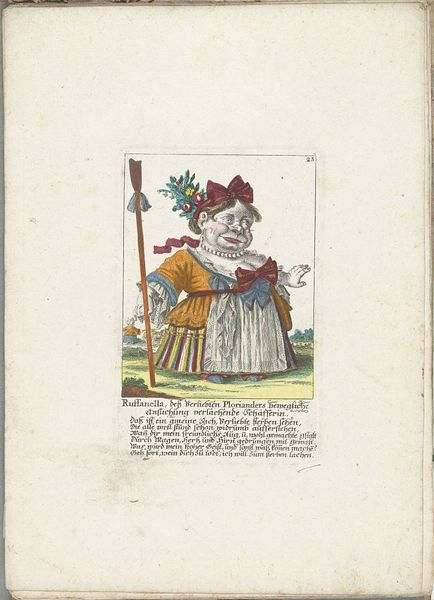
De dwerg Piters Kahlmüß Wisseller als walvisvaarder, ca. 1710 1705 - 1715
0:00
0:00
martinengelbrecht
Rijksmuseum
print, etching, watercolor
#
portrait
#
baroque
# print
#
etching
#
caricature
#
watercolor
#
watercolour illustration
#
genre-painting
#
watercolor
Dimensions: height 170 mm, width 110 mm, height 320 mm, width 225 mm
Copyright: Rijks Museum: Open Domain
Martin Engelbrecht created this print around 1710 using etching and engraving techniques, then added color by hand. These processes, while traditional, are here employed in the service of satire. The density of the etched lines defines the forms, especially the figure’s grotesque features. The hand-coloring, applied with care, gives the print its final character. The very act of printing and distributing such images reflects the growth of a media culture, a vital ingredient for early capitalism. Consider the labor involved: the artist’s design, the engraver’s skill, the printer's expertise, and the colorist's touch. Each stage represents a distinct contribution, much like the specialized roles in a factory. This division of labor allowed for mass production and dissemination of images like this one. Engelbrecht's print reminds us that even seemingly simple artworks are products of complex social and economic systems. By recognizing this, we can appreciate how such images helped shape public opinion and cultural values of the time.
Comments
No comments
Be the first to comment and join the conversation on the ultimate creative platform.
